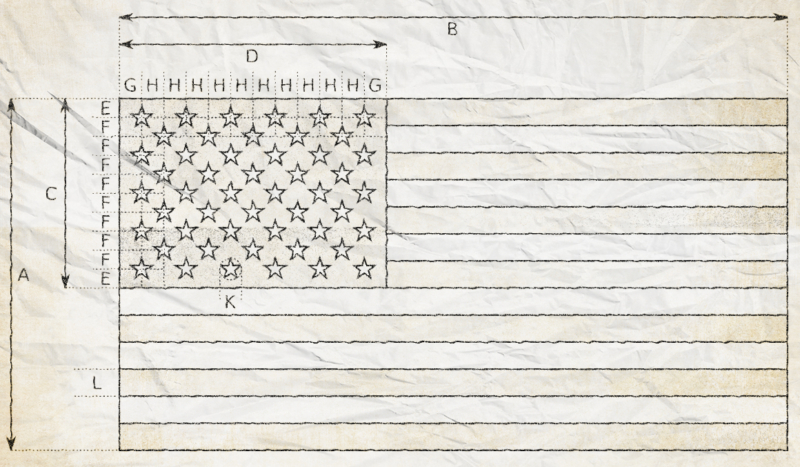
One of the most universal symbols of freedom and patriotism, the American flag, has been around since the country’s founding. However, the true story of the flag’s beginning remains unknown.
Many claim that Betsy Ross created the first American flag, and this may be true, but the flag has a more vague history than you were probably taught in school. From its debut on January 1, 1776 to the finalization of its current design on August 21, 1960, the flag’s design has undergone constant revisions.
History
Before there was an American flag, there was the Sons of Liberty flag. This red and white striped flag was hung horizontally or vertically. The Sons of Liberty organized the Boston Tea Party, the first in a series of events that led up to the American Revolution.
When George Washington arrived outside of Boston to take command of the troops at the beginning of the Revolution, he carried two flags with him.
One flag had 13 red and white stripes, showing that the colonies were still under British rule. They had not yet declared their independence but were fighting for representation in parliament. This flag was much like ours today, but with the British flag nestled in the left corner instead of the 50 stars with which we are familiar.
The other flag had thirteen white stars in alternating rows over a blue background. Known as the Washington Headquarters Flag, its pattern was used on the blue field of the first American flag.
The Declaration of Independence was issued on July 4, 1776 but it was not until June 14, 1777 that an official flag act passed. The act said “that the Flag of the thirteen United States shall be thirteen stripes, alternate red and white; that the Union be thirteen stars, white on a blue field, representing a new constellation.” However, it did not specify the orientation of the stripes, the pattern of the stars, or how many points the stars were to have. The lack of clarity created variations during production, and this is where Betsy Ross comes into the story.
Betsy Ross worked as an upholsterer and legend says that she met George Washington and designed the first flag. However, others say that Francis Hopkins designed it, according to a bill that showed Hopkins was owed two casks of ale for his flag design. But there is no documentation of what this flag may have looked like. Many people claim that Francis Hopkins designed the flag while Betsy Ross did the physical labor of actually making it. This is a mystery that may never be solved.
As each new state joined the union, another stripe and star was added to the flag. The flag that inspired the “Star Spangled Banner” actually had fifteen stripes and fifteen stars. By this time, it had been declared that the stars would be arranged in alternating rows.
However, as time went on, the flag began to look cluttered with so many stars and stripes, so in 1818 Congress decided that the flag would return to the original thirteen red and white stripes, but a new star would be added to the blue field for each new state.
What Do the Colors Mean?
Some say that because the colors of the British flag are also red, white, and blue, the new Americans simply did some symbolic rearranging.
Regardless of how the colors were chosen, they have significance today: red stands for hardiness and valor; blue stands for vigilance, perseverance, and justice; and white stands for purity and innocence.
How to Care for the Flag
Displaying the American flag shows love for country and gratitude for the freedom Americans enjoy. In order to preserve the dignity of the flag and honor those who died defending what it represents, guidelines exist on how to properly display Old Glory:
- The flag should fly from sunrise to sunset and should never be displayed in inclement weather. The flag may be flown throughout the night if there is a light illuminating it.
- The flag should never touch anything below it while hanging.
- If the flag is damaged or dirty, proper care should be taken to clean or repair it. If it is damaged beyond repair, it should be disposed of in a dignified manner.
- If the flag is displayed vertically, the blue field of stars should be displayed in the upper left corner.
- The flag should be able to flow freely in the wind when displayed on a flagstaff. It should not be stretched out with another rod.
Happy Independence Day! May your flags fly freely in the wind, celebrating the independence and freedom we all hold so dear.

